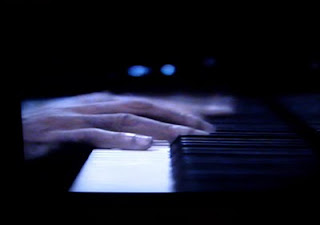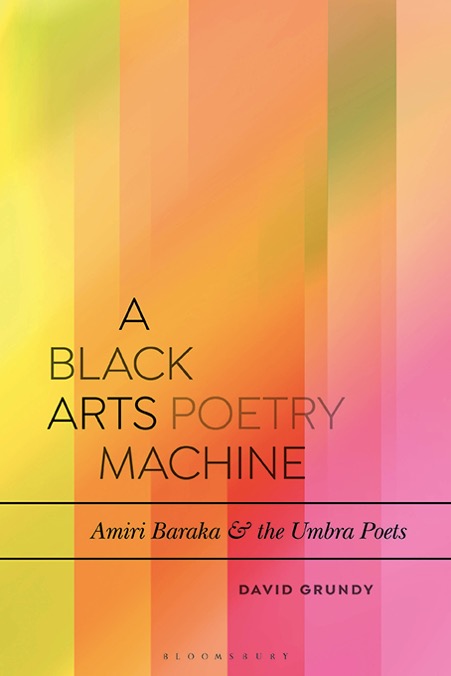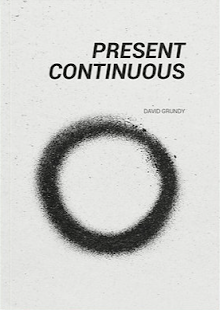


Mystic Fire Video 76240 (VHS), 1991)
Recorded at National Video Industries, NYC
1. Poles [10:20]
2. The Silence of Trees [30:50]
3. For (1st Part) [7:10]
Cecil Taylor (piano)
William Parker (bass)
Tony Oxley (drums)
André Martinez (drums; percussion)
Cecil Taylor’s 1987 poetry record ‘Chinamapas’ (still a document that requires further investigation on the part of literary, as well as musical, scholars) begins with the lines: “Angle of incidence / Being matter ignited.” Taylor’s sibilant stress on the dying, expelled breath at the end of the third word invites one to read a pun on ‘incidence’ and ‘incidents’, referring at once to the ‘action-packed’ density of the music – its delirious surfeit of events (incidents) – and to the occasion and extent of those events (incidence) – the place/ space where things happen, the angle into which one fits and from which one views the world in a particular way. The technical meaning of the phrase “angle of incidence” is “a measure of deviation of something from ‘straight on’ ”, and we might see this is as an indication of Taylor’s trajectory away from (or parallel to) the history and tradition of ‘straight-ahead’ jazz (and also, in his adoption of a distinctly camp aesthetic, his improvised-composed queering/ querying of the sexualities of jazz); also, of the way that the ‘straight line’ of his overall musical system allows for a myriad of variations, deviations, digressions, alternatives; the one at harmony with the many, the individual with the group. (We think here of that often-used group name, ‘The Cecil Taylor Unit’: ‘unit’ meaning unit of measurement – time, length, breadth; ‘unit’ meaning part of a whole; and ‘unit’ meaning ‘unity’, a group of individuals merging to form one group entity.) That phrase, “angle of incidence,” now rolls into the next line, which completes it or adds to it; but, like the musical phrases Taylor plays on the piano, it also has its own, independent existence, not necessarily directly dependent on what has preceded it. Thus, we can read the first word of “being matter ignited” as a noun, ‘being’ and ‘matter’ fusing into a kind of Joyceian compound stressing the physicality of existence, the inseparability of the spirit; the essence, the essential ‘being’ of an individual and their ‘matter’ – their body, their atomic structure, their bones and blood and breath. Perhaps such a reading is deliberately willful, capricious – though in line, I would argue, with Cecil’s own poetic practice – if we return to the original context of the poem, we find, of course, that “being-matter ignited” is actually “being matter ignited,” a line referring to the “angle of incidence.” But the word ‘ignited’ could arguably refer equally well to ‘being-matter’ as to the ‘angle of incidence’, both being ignited, set aflame – impassioned, torched off by the creative spark, Promethean, generating heat/ sweat through physical exertion, playing ‘hot’ as Louis Armstrong did, ‘burning’ as in the jazz slang for a player who’s really gone ‘into’ the music; ‘burning’ as in ‘Fire Music’ or even ‘Great Balls of Fire.’
In any case, the ‘being’ and ‘matter’ of ‘Burning Poles’ (another fire reference) certainly has its fair share of sparks and flames; that same ignition that set off the ‘Hard Driving Jazz’ of Taylor’s much earlier collaboration with Coltrane; that same illumination that Taylor has always cast back on his audience, allowing them, through his dedicated and exhaustive examination of self, to see themselves as much as they see him. ‘Poles’ is a film document of early-90s Cecil, available only on VHS, with no talking heads, interview segments, or ‘contextualisation’, and instead a good slab of pure performance footage, seemingly shot in a TV studio, with the players lit against a totally black backdrop. The material seems to have been edited in some way (was more filmed and then discarded?): an opening piece for poetry and percussion (Taylor's typical introductory tactic since the late 70s) gives way to the performance which makes up the bulk of the video, seemingly shot in the same studio but with Taylor sporting a different outfit, and the closing 'encore' goes back to the initial session. As a result, there’s a somewhat truncated feel to proceedings, though the film as a whole still lasts for almost an hour. No matter, what we have is nonetheless some meaty material that provides a fine opportunity to observe Taylor's technique, his physical approach to the piano, first hand. The music comes from the era associated in Taylor's discography with the mammoth box set of recordings from his 1988 Berlin residency, released on FMP; it was there that he first played with Tony Oxley, who in the following twenty or so years, has proved to be one of his most frequent collaborators, and clearly loves the sparks thrown out by Taylor's fleet-fingered pianism. In performance, his upper body stays quite still, his eyes remaining focused on the drumkit while his arms swing round it almost casually, producing a sweeping wash on the cymbals, or accentuating the leader's fiercely rhythmic attack with metallic interjections and clattery, herky-jerky rhythms of his own. When he does look up, catching Taylor's eye (both men momentarily playing by touch and locking each other's gaze), the pleasure he gets from being in such a context is clearly visible. There's a real twinkle in his eyes and a smile on his face; he looks as if he might burst into laughing at the sheer joy and exuberance and energy of all that sound just pouring out all around him.
The other members of the group – William Parker, who makes up the final third of Taylor's 'Feel Trio', a 90s mainstay - and André (credited here by his middle name, Henry) Martinez, might almost seem to be overshadowed by such a dynamic relationship. But it's worth listening closely, in particular, to Parker's melodic shadowing of Cecil (a technique also used by Dominic Duval on the more recent duo CD ‘The Last Dance’ (and here)): the way he picks up on and parallels, but does not quite directly imitate, Taylor's trademark 'licks', those melodic figures, 'cells' or 'units', that have formed an ever-present, yet fluid compositional element in almost all of the pianist's improvisations during the latter third of his career. Martinez, who the camera virtually ignores (all we see of him is a hat and sunglasses, peaking out from behind the raised lid of the Bosendorfer), surely contributes to the dense propulsive percussive barrage behind Cecil, though it's hard to separate his contributions from Oxley's. He's most visible in the opening poetry section, which he introduces by alternately striking a gong and some chimes, to eerie and rather striking effect. Though Taylor's 'recitation' is, as ever, somewhat off-mic (and here the words are rendered almost entirely inaudible), it can be enjoyed nonetheless for its sound qualities: squawking, scratching, rasping, almost bird-like, well complemented by Parker's own semi-sung backing (or humming) chorus.



Some of the film's most striking visual effects occur in this section too: Taylor's dance movements seem to resemble a kind of kinetic sculpture, as he raises an arm and a leg and stands poised (posed) on one foot, while declaiming off a sheet of hand-written paper stashed inside the body of the Bosendorfer, or holding a mallet between thumb and forefinger, ready to strike and scrape the piano strings in a manner that actualizes his frequently-cited description of the instrument as '88 tuned drums.' The camera-work is fairly unfussy, cuts between the musicians remaining unobtrusive and not piling on too many distracting visual rhythms counter to the flow of the sonic interaction. Most often, it’s Taylor who occupies the frame; there are some nice close-ups of his fingers on the keyboard, and we notice the way his hands turn into sharp, jabbing prongs during those infamous dissonant runs from the top-end down, the two strongest fingers of each hand doing the hard work while the others curl up for a moment of temporary respite. Here we might also recall the title of Taylor's first duo encounter with Oxley, 'Leaf Palm Hand', and note the way that, at times, Taylor looses the tight muscular control which forms the basis for his extreme virtuosic style, instead simply letting his fingers slip and slide across the keys in rippling, downward runs, or banging out fortissimo clusters with his palms. Also present are those signature Taylor 'licks', which can by now be said to constitute a kind of rhythmic thinking hard-wired into his brain: just as certain poets become such masters of their craft that they can think in verse, their thought emerging through and in metrical form rather than existing separately from it, so Taylor's specific harmonic and rhythmic tics mark a total absorption in, and control over, the formal qualities of his music. Though there are suggestions of the melancholy minor-key romanticism which peppers the solo recordings in particular, things are generally kept at a fast, high-octane pace throughout, any suggestions of a pause or hiatus quickly dispelled by a single note strum from Parker or another tap of the cymbals from Oxley. Things never quite reach the peaks of the late ’70s Unit, where performances would last for over two hours and the music would reach such a peak of information density and total commitment of energy that it seemed to erase linear time in favour of an endless, ecstatic, hyper-kinetic present: a kind of eternity in music created, not from the stasis and peace that the word 'eternity' might suggest, but from pushing things to the limit of mental and physical possibility in a process filled, packed, crammed with action. But then again, despite the absence of any horn players, the music created on 'Burning Poles' is about as far from the conventions of the jazz 'piano trio' as it's possible to get, and that's not entirely due to the presence of two drummers. Over the years Cecil has somehow managed to transform into a full band or even an orchestra in himself: he takes care of the bass end of the music, with those punched-out figures right down at the bottom end of the Bosendorfer (what he's called his 'James Brown shit'); the rhythmic/percussive side (in everything he plays); the harmonic middle-ground; and the top-end usually occupied by the horns. When you add other players on top of that, there is the danger of an overly dense and muddy texture, but what is particularly amazing is how rarely this happens: in fact, the only occasion I can think of is the twenty-first century big band performance with the Sound Vision orchestra, which entered the sort of free-jazz territory exemplified by Alan Silva's 'The Seasons' or 'Luna Surface'; and, by contrast, the solo work, as it's developed and coalesced and crystallized over the years, has become more luminous and clear and straightforwardly beautiful than ever. The same clarity applies here, with busyness in detail and speed of execution matched by the ability to listen and respond with sympathy and understanding (but not timidity, which the music could not countenance).



In some ways, it’s hard to make a final judgment or assessment on the music presented on ‘Burning Poles’; Cecil, who, early in his career, bemoaned the narrow- and simple-minded criteria of the white jazz critics of the day, has subsequently succeeded in creating such an imposing body of work that it is near impossible to digest, analyze and absorb is output in any completely systematic way. When each performance contains enough material to last about ten releases from anyone else, one’s hard put to compare and contrast things too much: you simply have to let things wash over you, focusing in on particularly striking details and familiar touching posts as anchors and absorbing everything else by osmosis. In addition, Cecil’s style has become more and more firmly established as a unique, inseparable imprint, a form of thought that flows throughout everything he plays. One cannot imagine him ever recording as a sideman; everything has to take place on his own terms, a rare place and one that he’s earned with strenuous effort over a period of half a century – more. As a result, anyone who plays with him has to fit into his world; not since Jimmy Lyons has anyone, with the exception of Derek Bailey, been able to claim a near-equal share of a piece’s overall conception and sound (and Lyons was, in a sense, transmitting Cecil’s ideas to the rest of the band himself – think of those luxuriant melodic ‘heads’ on ‘3 Phasis’ and the 1978 ‘Cecil Taylor Unit’ recording). That said, you still need a hell of a lot of technique and instant understanding to be able to enter the vortex that is a Taylor performance – while Taylor is his own best interpreter, so absorbed in his own musical language that it might almost be said to emerge from him involuntarily, automatically, other musicians must adapt to his system from a position of relative ignorance, putting into practice a quick-thinking improvisational mindset that can challenge and provoke the best from the pianist without compromising or getting in the way of said system. Thus, while Taylor is pretty much a given – we know roughly what to expect, in terms of characteristic patterns, licks, ebbs and flows (though the multiple re-arrangements and permutations within this overall picture still contain boundless possibilities of change, transformation, delight and surprise) – his ‘sidemen’ can make the difference between simply a good performance and a great one, one to stand up alongside ‘One Too Many Salty Swift’, ‘Conquistador’, ‘Dark to Themselves’, and all those other classics. There’s no questioning that Oxley is a remarkably sympathetic and inspiring collaborator – his expanded kit and loose but firm approach form an ideal complement to Taylor’s late style, just as Max Roach’s more directly melodic, jazz-based playing sat well with the fire of the ’70s and ’80s Cecil – and Parker has proved adaptable to pretty much any context in his packed career. Nonetheless, ‘Burning Poles’ perhaps lacks the cutting-edge, telepathic interplay demonstrated on the contemporary box-set ‘Two T’s for a Lovely T’, where The Feel Trio really got to grips with their particular aesthetic, their particular dynamic, during a week-long residency at Ronnie Scott’s Jazz Club. Maybe it’s just proof that, when it comes to music of such scale and scope and grandeur, more really is more: 56 minutes just doesn’t do Taylor justice. Whatever the case, ‘Poles’ is an interesting, if not entirely essential document (though it’s hard to know what exactly ‘essential’ means when it comes to CT, as many collectors and followers of his work over the years could no doubt also tell you). Historically, one might argue that it’s of importance for the way it tracks the collaboration with Parker and, especially, Oxley, and also for shedding some light on André Martinez’ role in the Cecil saga (Martinez was with Taylor for ten years, though he only appears on two officially-released recordings). But in the end, I suppose one has to say that, if you’ve got far enough into the man’s work to read about an obscure document like this, you’ll probably want to check out the video regardless. For even if it is just – to quote ‘Chinampas’ once more– “one-sixtieth of [the] luminous intensity” of Taylor’s output, that still renders it luminous indeed.




